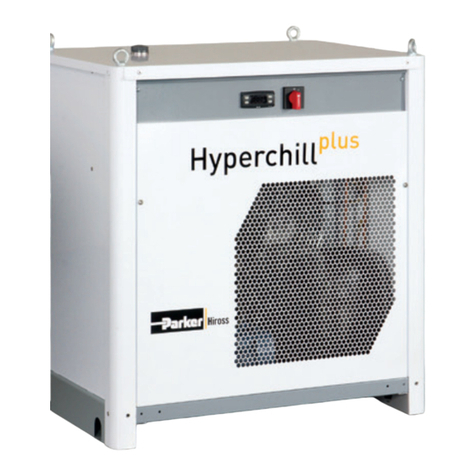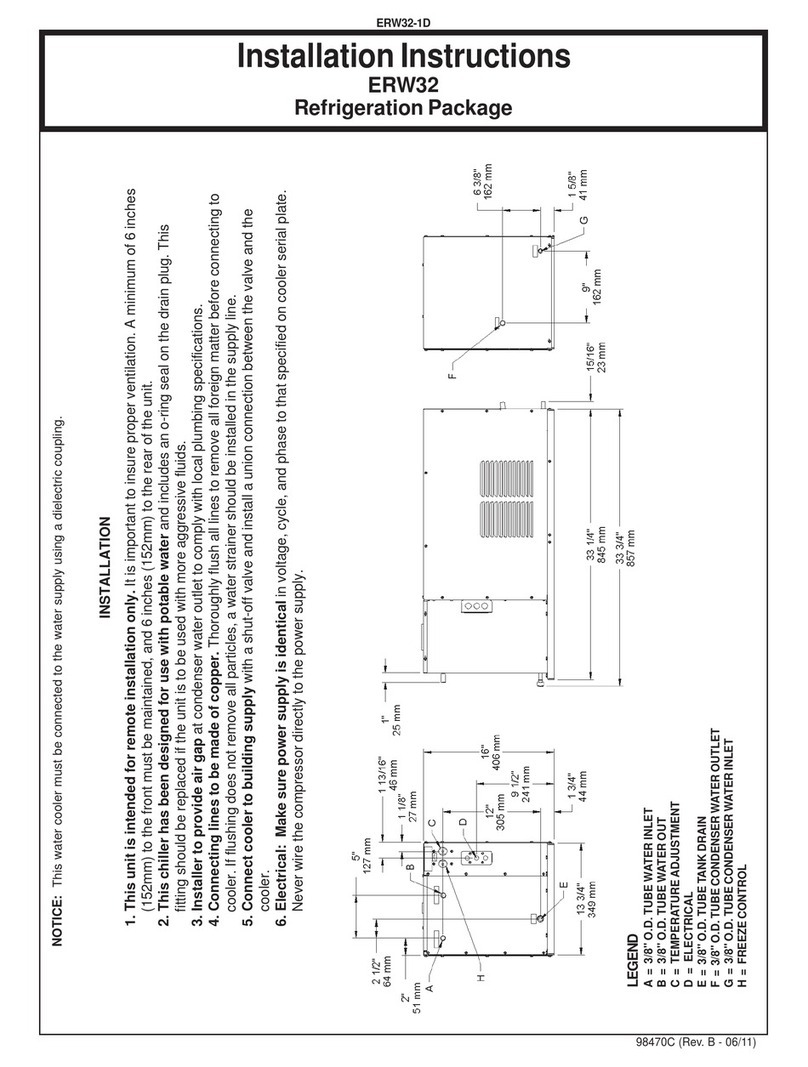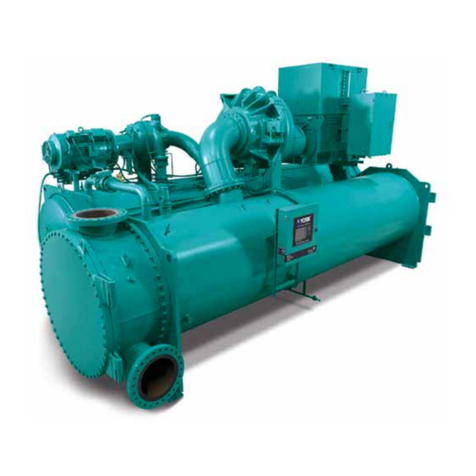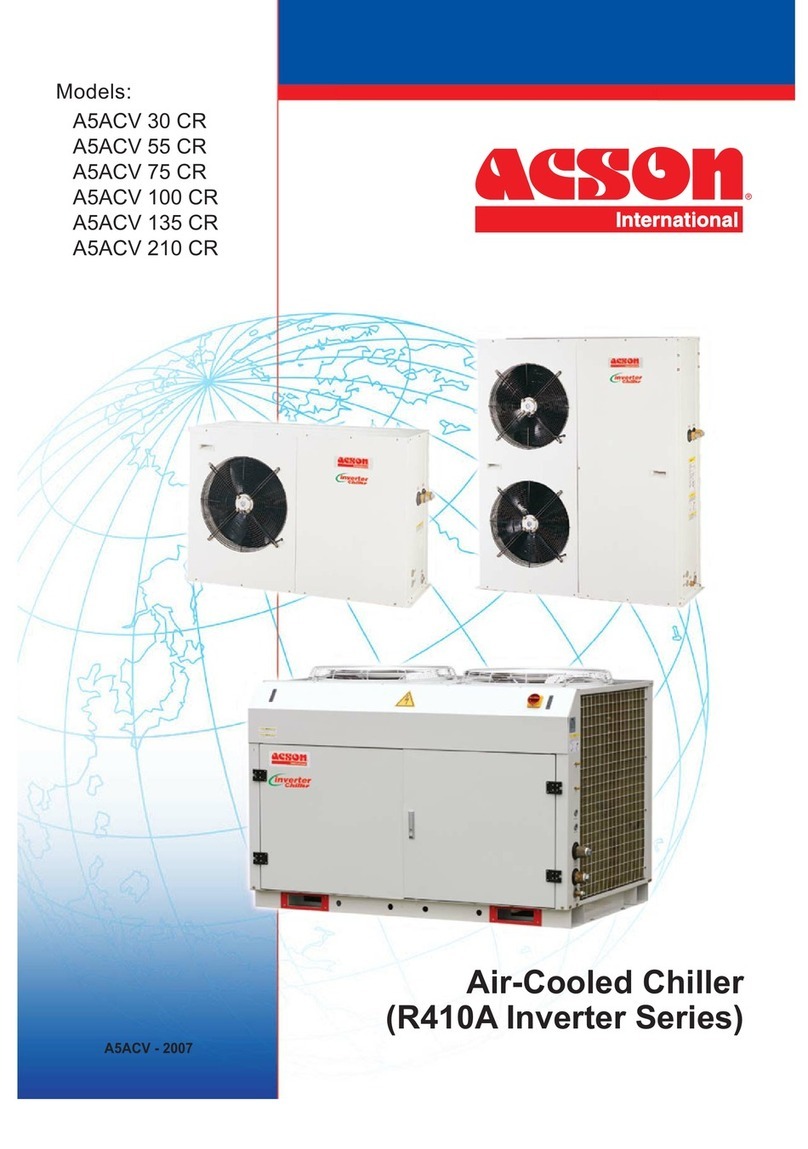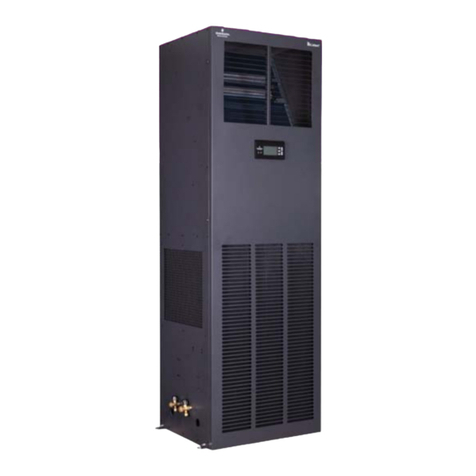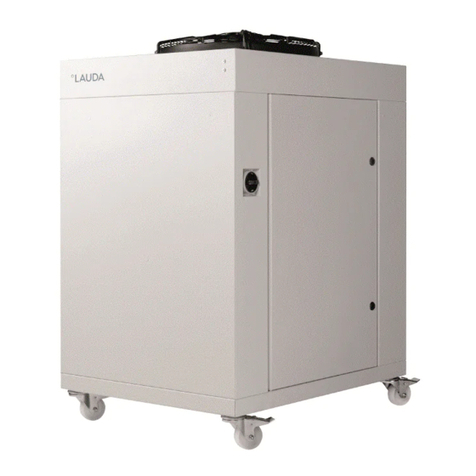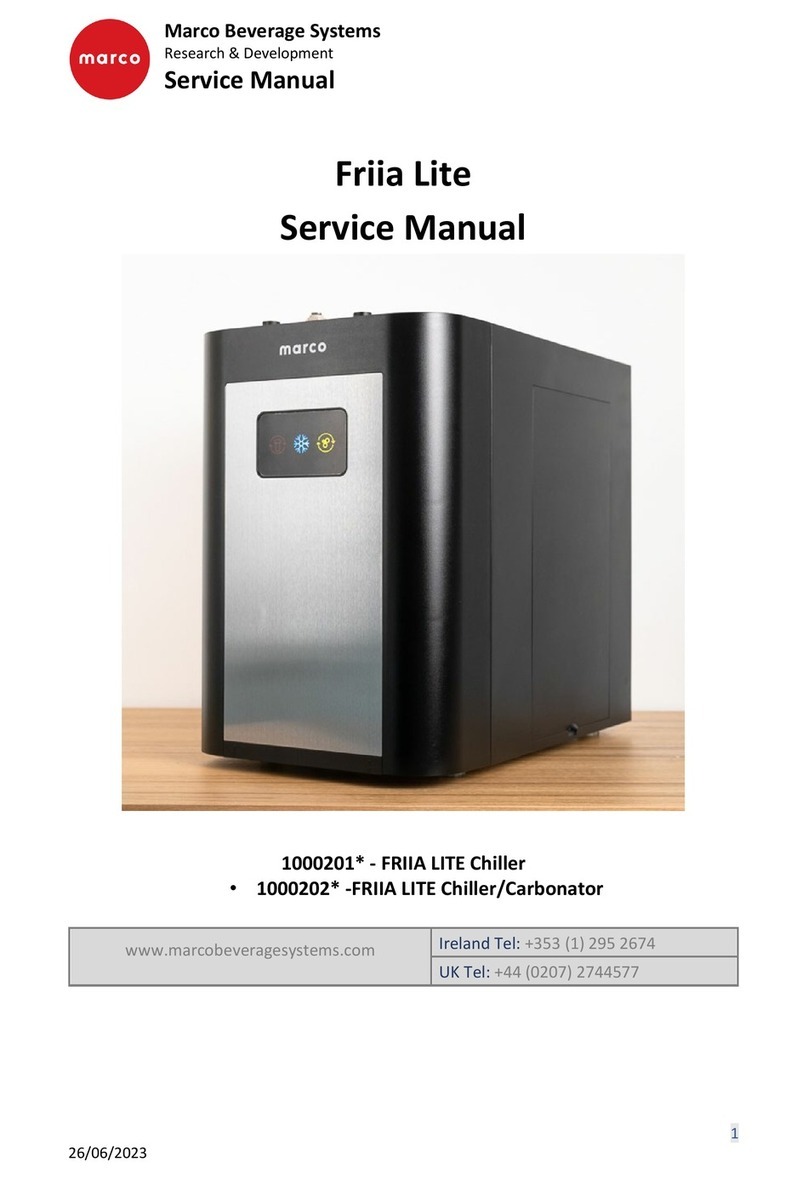Billi Quadra Sparkling User manual

Install Guide
Quadra Sparkling

Safety
The unit should be isolated from the electricity supply before removal of any covers. Great care must be
employed when working with high pressure carbon dioxide, and in no cases should the maximum operating
pressure of 58 psi (4 bar) be exceeded.
Introduction
This unit has been designed to work in an enclosed, under counter installation without the need for an
additional ventilation kit, as cooling of the fridge system is provided by water from the mains supply
rather than air cooling.
Specification
Dimensions 180mm(W)
360mm(D)
420mm(H)
Compressor Cubigel B38G
Supply 220-240Vac/50Hz This product contains fluorinated greenhouse gas with a GWP
of 1430 in an hermetically sealed system
Rated Input 200W - Cold
2150W - Boiling
Rated Current 1.5A
10A
Refrigerant R134a, 60g
Fuse Rating 5A
13A
Climatic Class N
CO2 Pressure 40-50 PSI (2.7-3.4 bar) Potable water inlet
pressure
Internally regulated at 19
PSI (1.3 bar)
Compliance
Introduction and Specification

Installation and Commissioning
The chilled unit is designed to operate with the Billi™ range of tap/dispensing equipment and should
not be operated in isolation from these units.
•Locate the machine in a suitable enclosure, Quadra Sparkling is designed to work without the
need for additional ventilation, this is achieved by using water to cool the refrigeration system
rather than air.
Note: At this stage do not connect the unit to the electrical supply.
CO2 Gas and Water Connections
Drinking water and gas connections are via 6mm John Guest Speedfit fittings, which are black in
colour.
Condenser water connections are via ¼” John Guest Speedfit fittings, which are grey in colour. NOTE:
6mm tubing must not be used with ¼” fittings as this may lead to water leaks.
•Connect “WATER IN” to the water supply from the parent boiler. After all connections are made
the boiler unit should be on and ready to supply water to the cold unit. Water pressure in the
chiller is internally regulated at 19 PSI (1.3 BAR).
•Connect the “CO2 GAS IN” to the regulator, ensuring the pressure is set to 40 PSI (2.7 bar), and
turn on the supply.
•Connect “TO TAP” to the water dispense tap.
•Connect “CONDENSER WATER IN” to mains water and open the supply of water.
NOTE: This water supply to the “CONDENSER WATER IN” port must have a minimum
pressure of 1.3Bar.
•Connect “CONDENSER WATER OUT” to drain.
•Connect the flying lead from the parent boiler to the socket labelled “TO BOILER”.
•With the boiler ready to supply water plug in and turn on the chiller unit.
•The compressor will start, and the water pump will operate for approximately 20-30 seconds to
fill the carbonator vessel. Verify that water is flowing from the “CONDENSER WATER OUT” to
drain. The flow rate has been factory set to 5ml/s at 1.3 bar, so a low flow rate is expected to
drain, however, this expected to be a constant flow and should not be dripping.
•Once the water pump has switched off dispense still water until all air is expelled from the tap
and a smooth flow of water is established.
•Now dispense at least 1 ltr of soda water to help purge the system of any remaining air.
•After approximately 10 minutes, the compressor will stop as the chiller has reached its normal
operating temperature.

Installation and Commissioning
Note: The time taken for the chiller to reach operating temperature will vary depending on ambient
temperature, humidity and the temperature of the incoming water supply.
The Soda flow rate is factory set to dispense at 30 ml per second at a gas pressure of 40psi (2.7
bar). However, if an alternative flow rate is required follow the steps below:
1. Locate the flow adjuster screw on the side of the unit (Fig 1.).
2. To increase the flow rate turn the screw anti-clockwise.
3. To reduce flow rate turn the screw clockwise.
4. Adjustments can be made with either a large flat head screw driver or with a 6mm Alan key.
5. It is recommended to make incremental changes of no more than a quarter turn at a time until
desired flow rate is achieved.
Fig 1.
Adjust

Electrical Circuit
Water Circuit
PRESSURE REGULATOR.
FIXED AT 1.3 BAR (19 PSI). CARBONATOR CAN
FILL PUMP.
WATER COIL
CHECK VALVE
CARBONATOR
FLOW CONTROL
PRESSURE
RELIEF VALVE
CARBONATOR CAN
CHECK VALVE
TO DISPENSE
TAP.
PRESSURE REGULATOR.
WATER IN.
CO2 GAS IN.
CHECK VALVE SODA
SOLENOID
VALVE
STILL
SOLENOID
VALVE
5A
5A
HEAT EXCHANGER
SOLENOID VALVE
COMPRESSOR
CARBONATOR
CAN
TEMPERATURE
PROBES
POWER INLET.
220-240VAC, 50Hz.
GN/YE
WH
GN/YE YE
BU
BN
WH
BU
BU
BN
1
2
3
4
5
6
7
8
9
10
11
12
13
1
2
3
4
5
6
7
8
9
1
2
3
4
GN/YE
CAN FILL PUMP
GN/YE
WH
BK
WH
BK
HIGH SIDE
PROTECTION
CHILLER
PROBE
PROBE ID
Installation and Commissioning

Prior to any fault finding, please ensure all water connections to the chiller are sound and that the
incoming water supply is turned on. Also ensure that all electrical connections to the chiller and in the
chiller are secure and in good condition, the power is on and that the chiller has had adequate time to
reach operating temperature.
NOTE: When checking electrical connections ensure mains power is switched off.
Symptom Possible Cause Corrective Action
No Water
Dispensing
Water pressure
regulator
Check water can flow through the regulator.
Replace if
necessary.
Frozen chiller block Ensure temperature probe is fully inserted into
the dry block. If necessary replace probe.
Faulty dispense valve Check valve can open on demand. Replace valve
block if necessary.
Flying lead from
boiler not connected.
Connect flying lead from boiler to the chiller unit.
Faulty dispense
control board
Check and replace if necessary.
Pump not running
during still water
dispense.
Check for pump timeout, cycle power off & on.
Check supply to water pump (230V AC), if
voltage present & pump inoperative - replace
pump.
If voltage not present & pump is not timed out,
check main control board fuses. If necessary
replace control board.
No
Carbonated
Water
No CO2 pressure,
check by operating
pressure relief valve
on carbonator can
Check CO2 bottle, regulator and non-return valve.
Supply pressure should be 40 psi (2.7 bar), adjust
or replace as necessary.
Water pressure
regulator Check water can flow through the regulator.
Replace if necessary.
Frozen chiller block Ensure temperature probe is fully inserted into
the dry block. If necessary replace probe.
Faulty dispense valve Check valve can open on demand. Replace valve
block if necessary.
Flying lead from
boiler not connected.
Connect flying lead from boiler to the chiller unit.
Faulty dispense
control board
Check and replace if necessary.
Carbonator Can
Not Filling
Check carbonator probe for possible short circuit to
ground. Check for pump timeout, cycle power off &
on then purge carbonator. Check supply to water
pump (230V AC), if voltage present & pump
inoperative - replace pump. If voltage not present &
pump is not timed out, check control board fuses. If
necessary replace control board.
Fault Finding

Poor Quality
Carbonation
Incorrect CO2 Pressure Check CO2 bottle, regulator and non- return valve.
Supply pressure should be 40 psi (2.7 bar), adjust
or replace as necessary.
Air in Carbonator Can Isolate water supply and operate the carb water tap
until gas is expelled. Allow gas to expel for 5
seconds. Restore water supply and allow the can to
refill.
Residue in
Carbonator Can
After prolonged use, a surface film can develop
within the carbonator can. This can be removed by
flushing the system using a solution of citric acid.
Carbonator can is
overfilled
If pump runs continuously, check connections to
can level probe, if problem persists replace the
PCB.
Warm Drinks Insufficient water flow
through the fridge
heat exchanger.
Check for water flow from the “FRIDGE WATER OUT”
port whilst the fridge is running. The flow rate should
be a minimum of 5ml/s with a minimum water inlet
pressure of 1.3Bar.
Check supply voltage to the heat exchanger solenoid
valve (230V AC) whilst the fridge is running. Replace
valve if necessary. If supply not present move on to the
compressor. The supply to the solenoid valve and the
compressor are linked.
Compressor not
running Fridge overheat. Switch off the unit and allow to cool.
Ensure the solenoid valve operates and sufficient
water flow is available through the heat exchanger. If
overheating persists return for repair.
If no overheat is found check voltage to compressor
(230V AC).
If voltage not present check the temperature probes
and replace if required.
If voltage not present check control board fuses. If
necessary replace control board.
Control board not
operating. Check control board and main plug fuses. If
necessary replace control board.
Fridge failure If compressor is running & sufficient water is
flowing through the heat exchanger and there is
no cooling, return for repair.
Fridge Condenser Care & Maintenance
After a period of operation it is possible that, especially in hard water areas, scale deposits may
build up inside the fridge heat exchanger. To help reduce this it is recommended that the water
supply to the “CONDENSER WATER IN” is fitted with a chemical or magnet water conditioning unit.
These units work to reduce the possibility of calcium particles be deposited in the heat exchanger.
If the water supply does not contain a conditioning system calcium build-up may reduce water flow
and potentially lead to a blockage. To prevent this, periodic cleaning of the heat exchanger may
be required using a descaling solution. The frequency of this will be dependent on the hardness
of the water and the demand on the chiller.
Fault Finding
Symptom Possible Cause Corrective Action

Removal, Transportation and Disposal
Important: Before removal from the installation, ensure all electrical, product
and gas connections are disconnected.
Disposal of Scrap Units
It is illegal to simply scrap a refrigeration unit. Before a unit can be scrapped it must first
have the gas removed by a specialist using special equipment. Please contact Billi
UK, who will be happy to provide a quotation for disposal.
Transportation
Important: This unit must be transported in an upright position
As with all refrigeration systems, irreparable damage can be caused by laying the unit on its
side or even transporting upside down. Where the unit is transported by a carrier, the carton
should always be marked in a conspicuous manner, the correct upright position in which it
must be handled.
If a unit has been transported incorrectly it should be placed in the correct upright position and
left for 24 hours before attempting to run the system.
Failure to observe the above precautions could seriously damage the system, and would void any
warranty.

Unpacking your Billi Quadra Sparking Unit
Before commencing installation, carefully
check for any damage to outer carton, inner
liner, appliance metalwork, pipework fittings
and electrical power cord. If damage is found,
please photograph and record details for use
if a claim is to be made.
WARNINGS relating to this appliance must be
read before commencing installation. Refer
to page 8.
When unpacking your appliance, ensure you
have identified the following components:
1. Boiling water module
2. Chilled water module
3. CO2 cylinder
CO2 regulator
4. Dispenser
5. Tube spring clamps x 2
6. Natural and 2 x black Ø6 mm PE tubes
with stem elbows fitted
7. 600mm flexible braided hose
8. Filter cartridge (installed)
9. User guide
10. Warranty registration card
11. Warning label
Determine Unit Location
Plan the installation carefully, taking into
consideration dispenser tube lengths,
position of power and water outlets,
ventilation airspace requirements and access
for service. Refer to diagrams 1, 2, 3a, 3b and
4. Diagram 4 shows minimum clearances
required around the units for ventilation
Water Supply
A single cold water supply point with a ½” BSP
stop tap is required. Stop tap is to be installed
in an easily accessible position, within 600 mm
of the inlet to the boiling water module.
Sparkling chilled water module is supplied from
an outlet fitting on the Boiling water module.
Dynamic supply pressure: Min. 250 kPa, max,
1000 kPa
NOTE: Quadra Plus models require an
additional ½” BSP stop tap water supply tap.
Refer to instructions on Page 6.
Supply temp: Min. 5°C, max. 30°C
Do not install with water that is
microbiologically unsafe or with water of
unknown quality without adequate disinfection
before or after the system. Systems certified for
cyst reduction may be used on disinfected
water that may contain filterable cysts.
Power Requirements
Quadra Sparkling models 460 and Plus 9
require 2 x 13 amp sockets, installed in an
accessible position. Refer to Diagram 1.
Quadra Sparkling models 4100 and Plus 15
boiling module require a separate 20amp
double pole with a dedicated circuit. Power
circuits must be fitted with an earth leakage
protection device (RCD). Both boiling and
chilled water module are supplied with flex
cord and plug.
Installation requirements.
XL
Diagram 1
Stop Tap
(Installed by Plumber)
Max 600mm from Unit
Tubing
removed
for clarity
205mm
175mm
20mm
bench
thickness
1mm-48mm
Diagram 2
10mm
130mm
35mm 70mm
Tubing
removed
for clarity

Installation requirements.
XL

1. Install Dispenser Assembly
Determine position of dispenser mounting
hole in sink top or bench top. Dispenser base
template (Diagram 5) may be cut out and
used to assist in correct positioning. Refer to
Diagram 2 for clearances allowed. Hole size
required is ø32mm.
The Billi XL dispenser is supplied with base
assembly preassembled into dispenser
upper and this must be first removed prior to
starting installation. Using allen key supplied
in installation kit, remove chrome plated
M4 screw from rear of housing. Twist base
casting around 60º and then slide assembly
out of upper housing. Carefully pull tubing
and electrical cable and plug through base
assembly.
—Stainless Steel Sinktop
A suitable 32mm hole punch (Part no:
857901) is available as an accessory from
Billi Pty Ltd. If possible, cut hole with die
mounted below the sinktop surface so that
burr is pulled downwards. Alternatively,
remove burr and radius edge of hole with
fine file. This allows barbed dispenser mount
to slide smoothly into mounting hole.
—Timber/Laminate Benchtop
Maximum benchtop thickness is 50mm.
Cut 32mm hole in appropriate position.
When drilling through a particle board
bench top, take care to avoid substrate
chipping and breaking away as drill breaks
through underside surface. We recommend
drilling a small pilot hole through benchtop,
partially drilling the 32mm hole from
underneath and then completing drilling the
hole from above. The large 30mm washer
supplied may be used to secure barb where
bench top substrate has chipped away.
—Granite/Marble Benchtop
For granite or marble bench tops
we recommend that you use a certified
stone mason to pre-drill the hole.
2. Activate Dispenser Swivel Feature
The XL dispenser can be installed either as
locked into straight position or able to swivel
45º in either direction. To activate the swivel
feature of your dispenser, remove the locking
piece from the dispenser base. Simply push
out the piece as show in Diagram 6. This will
allow the tap to swivel to the left and right.
3. Fit Dispenser Base
a. Cut a 32mm hole in sinktop or benchtop.
Remove burr if protruding upwards.
b. Push barbed mounting shaft through
mount hole.
c. Insert barb locking bush as shown in
Diagram 7. Finger tighten nut.
d. Ensure barb is centred in mount hole
before tightening. Check position of base
ring and gasket.
e. Moderately tighten locking nut using
multigrips or spanner. Take care to avoid
overtightening nut which may break the
plastic threaded shaft.
f. Place large D washer over thread as
shown in Diagram 7.
g. Cut off excess threaded shaft with a
hacksaw, using washer as a cutting guide.
(Diagram 8)
IMPORTANT: Remove burrs and check internal
bore is completely smooth.
4. Fit Dispenser Head Assembly
a. Feed dispenser tubing and loom through
center hole in the following order:
i. Dispenser power cord
ii. Silicone tubes
iii. Blue PE tube.
b. Gently pull hoses from under the bench
top. Do not attempt to force tubing through
with a pointed object as silicone tube is
easily punctured. Check tubing is not
kinked or twisted. Refer to Diagram 9.
c. Turn dispenser head assembly to
approximately 60° from the straight ahead
position of dispenser base. Slide head
assembly onto base assembly whilst
gently pulling tubing downwards from
underneath to prevent tubing bunching and
kinking. Head retaining lugs will pass nut
and slide down the 3 grooves on the swivel
bearing.
d. Once fully down, turn dispenser to
straight ahead position. Fit chrome
plated M4 retaining screw to lower rear
threaded hole and tighten using the allen
key supplied. If swivel feature is activated,
check dispenser now swivels smoothly 45°
in each direction.
Installing the dispenser.
XL
IMPORTANT: This Billi appliance is to be installed by a licensed trades person in accordance with
AS/NZS 3500.1 and AS/NZ 3500.2 and in compliance with applicable state regulatory requirements.
For correct operation of this appliance, it is essential to observe the manufacturer’s instructions.
3
dispenser base
template
Diagram 5
Diagram 6
Silicone
tubing
Diagram 9
Diagram 7
Swivel
Bearing
Gasket
D Washer
required
Barb locking bush in position
Barbed
Mounting
Shaft
Ensure burr
is removed
& edge has
a radius
Base Casting
Locking Nut
Diagram 8
Cut o
excess
thread
Remove burrs after cutting and
ensure internal bore is smooth
Alloy locking
bush
D washer

CHECK EACH OF THE FOLLOWING ITEMS:
Filter packing foam removed
from under filter cannister.
Dispenser mounted securely – M4
chrome retaining screw fitted.
Dispenser swivels 45º in each direction
(if activated) - locking piece is removed.
Tubing is cut to correct lengths and
not kinked or sagging. Red and grey
silicone tubes have a continual fall.
Tubing secured correctly – nuts and
spring clips fitted.
Water main flushed before connection to
unit.
Unit connected to COLD water supply.
Correct air clearances around unit.
Power circuit fitted with an RCD
– earth leakage protection device.
Sawdust cleaned out of cupboard area.
Door vents and spacer pads fitted
correctly
Initial program settings correctly set
for dispenser tube length.
Unit heating and cooling (after initial fill).
Red and blue dispenser icons flashing
(or on continually when reached correct
temperature).
Boiling and chilled water flow correct.
Commissioning
Checklist WARNINGS.
For continued safety of this appliance it must be installed, operated and maintained in
accordance with the manufacturer’s instructions. For correct operation of this appliance,
it is essential to observe the instructions as outlined in this booklet.
—Your appliance should be installed by a suitably qualified tradesperson.
—For correct operation of this appliance it is essential to observe the instructions as
outlined in this booklet.
—Do not use this appliance with water that is microbiologically unsafe or with water of
unknown quality without adequate disinfection before or after the system. Systems
certified for cyst reduction may be used on disinfected water that may contain filterable
cysts.
—Filter replacement must be performed at intervals of not more than 12 months.
—Use this appliance only as directed in these instructions and relevant Billi User Guide and
only for its designed purpose.
—Do not install unit if power cord is damaged.
—This appliance is not intended for use by persons (including children) with reduced
physical, sensory or mental capabilities, or lack of experience and knowledge, unless
they have been given supervision or instruction concerning use of the appliance by a
person responsible for their safety.
—Always activate boiling water safety lock switch where children or mentally disabled
persons could access the appliance.
—This appliance is designed for indoor installation only and must not be exposed to
direct sunlight, rain and excessive heat, cold, damp or dust.
—Do not store solvents or corrosive chemicals or other flammable items on or around
this appliance
—DANGER: High Voltages. Power supply must be disconnected before cleaning or
removing and outer covers form the appliance. Any service or unit repairs must be
performed by a trained and suitably qualified technician.
—Children should be supervised to ensure that they do not play with the appliance.
—DANGER: The operation of the thermal cut-out indicates a possibly dangerous situation.
Do not reset the thermal cut-out until the water heater has been serviced by a qualified
person.
—WARNING: Do not connect any restrictor or pressure relief device to the vent pipe of this
water heater if installed.
—If the supply cord is damaged, it must be replaced by the manufacturer, its service agent
or similarly qualified persons in order to avoid a hazard.
—New hose-sets supplied with the appliance are to be used and old hose-sets should not
be re-used.
—Packaging material including plastic bags must be kept out of reach of children and
disposed of according to local regulations.
—If the appliance has been turned upside down during transport and handling, wait for
at least 8 hours before switching appliance on.
As Billi (UK) LLP has a policy of continual improvement,
all details are subject to change without notice. All goods
are sold subject to our published terms and conditions.
Billi is a registered trademark.
© 2019
QSIG0519
Billi (UK) LLP
6b Central Avenue
St Andrew's Business Park
Norwich
NR7 0HR
020 7456 6789
www.billi-uk.com
London Showroom:
Synergy London
15 Dufferin Street
London
EC1Y 8PD
If any problems or difficulties arise contact
Billi (UK) LLP on 020 7456 6789. To
validate your warranty refer to the
warranty card or validate online at
www.billi-uk.com.
For information on our filtration
and service contracts please contact
Billi Customer Service on 020 7456 6789 or
Table of contents
Popular Chiller manuals by other brands
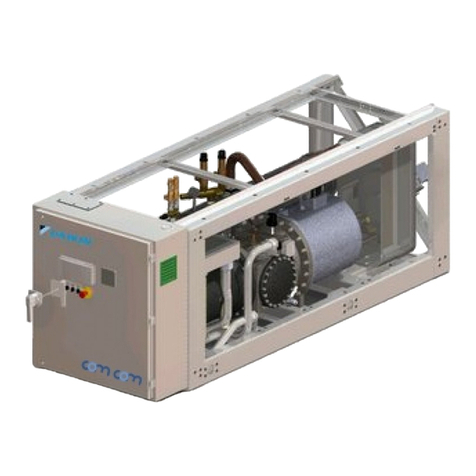
Daikin
Daikin EWWD J Series Installation, operation and maintenance manual

Daikin
Daikin AGZ 190D operating & maintenance manual
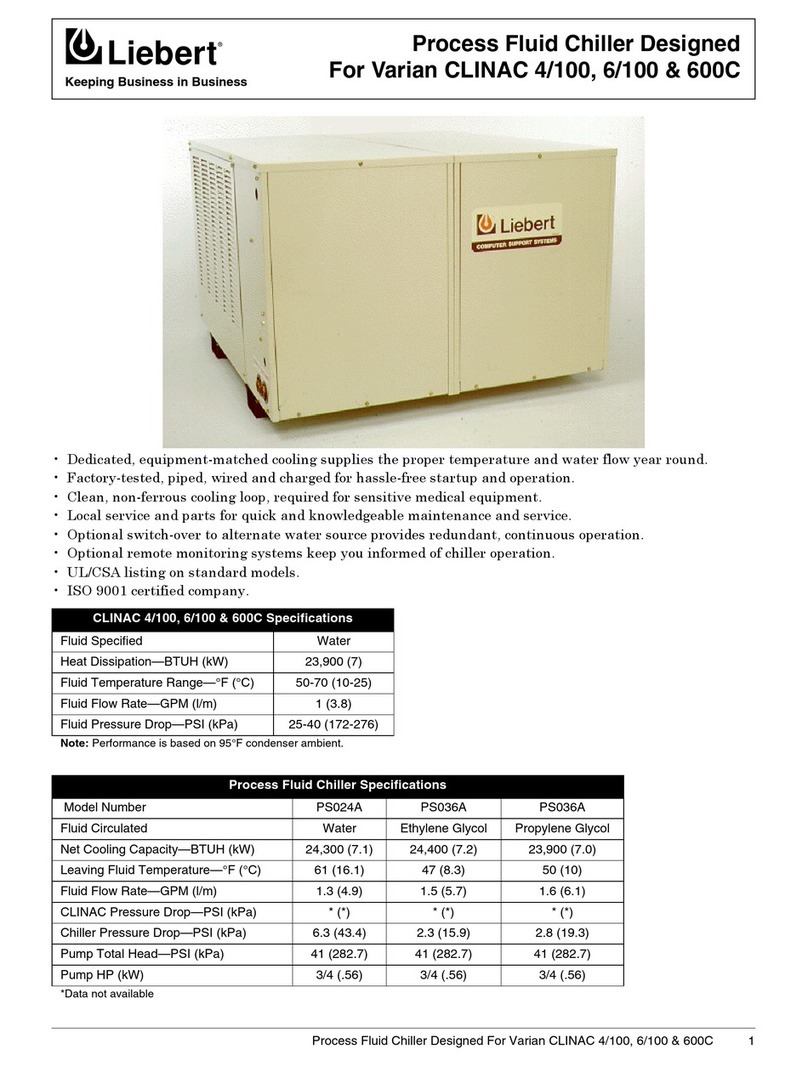
Liebert
Liebert Process Fluid Chiller PS024A Specification sheet
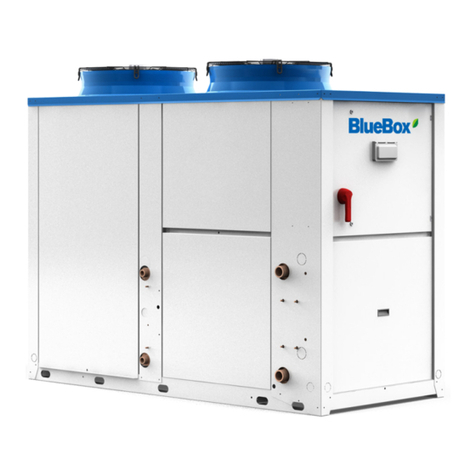
Swegon
Swegon BlueBox Zeta Rev Series Installation, use and maintenance manual
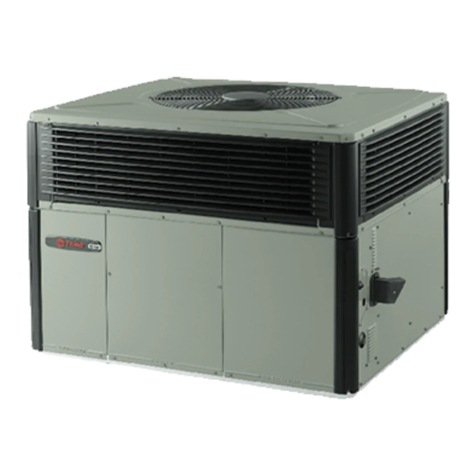
Trane
Trane 4YCY5024A1060A Installer's guide
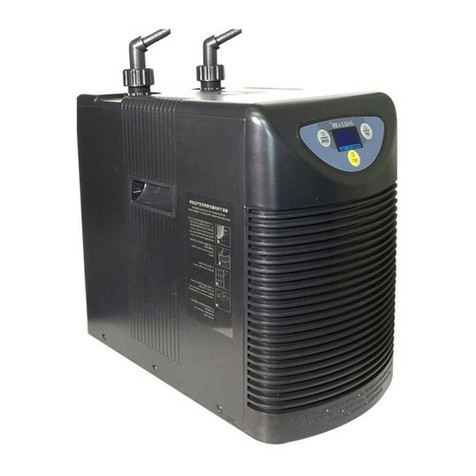
hailea
hailea HC-100A instruction manual

